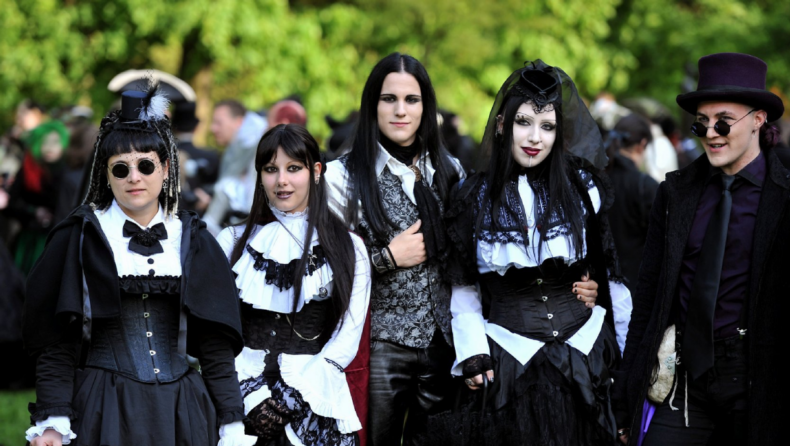The term goth is derived directly from the genre itself. These people had their taste interrelated with music, fashion and aesthetics. The subculture’s fashion was based on punk, new wave, and New Romantic. Gothic fiction has also impacted the Victorian era as short ghost stories were in trend at that time.
Goth is a subculture that developed in the early 1980s in the United Kingdom. The fans of Gothic rock, an offshoot post-punk music genre, developed this subculture. The term goth is derived directly from the genre itself.
The gothic rock genre has notable artists like Sioux Sie and the Banshees, Bauhaus, the Cure, and Joy Division. They have also helped in developing and shaping this subculture. This subculture prevailed for a more extended period than the people of this era and spread across the globe.
This subculture has imagery and cultural biases, which seems to be inspired by 19th-century gothic fiction and horror films. These people had their taste interrelated with music, fashion and aesthetics. They preferred music in various styles: gothic rock, deathrock, post-punk, horror punk, cold wave, darkwave, and ethereal wave.
The subculture’s fashion was based on punk, new wave, and New Romantic. Additionally, the style was influenced by previous periods, including the Victorian, Edwardian, and Belle Époque.
The late eighties and early nineties witnessed gothic bands’ new and second generation. They termed themselves as gothic with disparity to the first. Simultaneously US goth movement grew gradually, and many people from across the world were interested.
Also, many witnessed it as a unique subculture. So gothic music and culture gained fame. The boundaries that were before in the gothic subculture started to expand. This gothic culture also got converted into mainstream culture interested in supernatural and black aesthetics.
Gothic culture doesn’t have a defined meaning. Yet gothic art includes gothic literature, gothic film, gothic music, gothic architecture and gothic fashion.
Gothic Literature:
The novel the mysteries of Udolpho, released in 1794 by Ann Radcliffe, established the proper standard of gothic fiction.
Her other works include the Castles of Athlin and Dunbayne, published in 1789; the Romance of the Forest, published in 1791; and The Italian, published in 1797. Gothic fiction has also impacted the Victorian era as short ghost stories were in trend at that time.
As a form of semi-orthodox literature, the Gothic-style novel was revived in 1880. The most famous fictional villain was birth from Dracula, written by Bham stoker.
Gothic Film:
Haxan, directed by Swede Benjamin Christensen, was the first goth influential film in 1912. The film Nosferatu directed by Murnau, a German director, was the first landmark in the history of humankind as a gothic film.
Then later, there were films like Vampire’s Breakfast in 1931, the first Gothic talkie, Eyes without a Face directed by Georges Franju and the Hollywood Desire in 1983 by Tony Scott.
A golden age of cinematic development was indeed ushered in by Gothic film during the ‘90s. Gothic films were becoming more and more extensive instead of solely focusing on epics. Films with Gothic characteristics began moving closer to traditional types and soon blended with conventional films.
The audience was able to accept them more easily. Stephen Sommers directed Van Helsing in 2004 along with Queen of the Damned and Underworld in 2003 are some representatives.
Gothic Music:
Gothic music’s nature was gloomy, icy and decadent. People started to feel oppressive and hopeless. It felt bone-chilly with the sense of beauty.
The piece included a lot of inconsistent tones that deviated from the melody and was fixed range level. Hence developed a whole artistic spirit, the willingness to die and express themselves in the form of black colour. The song’s lyrics and performance spoke a desolate and erotic life.
Goth became a popular culture from its original subculture for many reasons. First and foremost, Gothic culture has a rich and spiritual connotation that has sustained its cultural vitality.
The popularity of mass media and the advance of computer technology gave ordinary people an easier way to access information. Lastly, many big commercial companies care about the business value of culture, such as a film studio, record company, clothing company, etc.
Moreover, with the development of the world economy, the purchasing power of young people with a solid ability to accept popular culture has increased. Consequently, goth culture has become increasingly popular.












